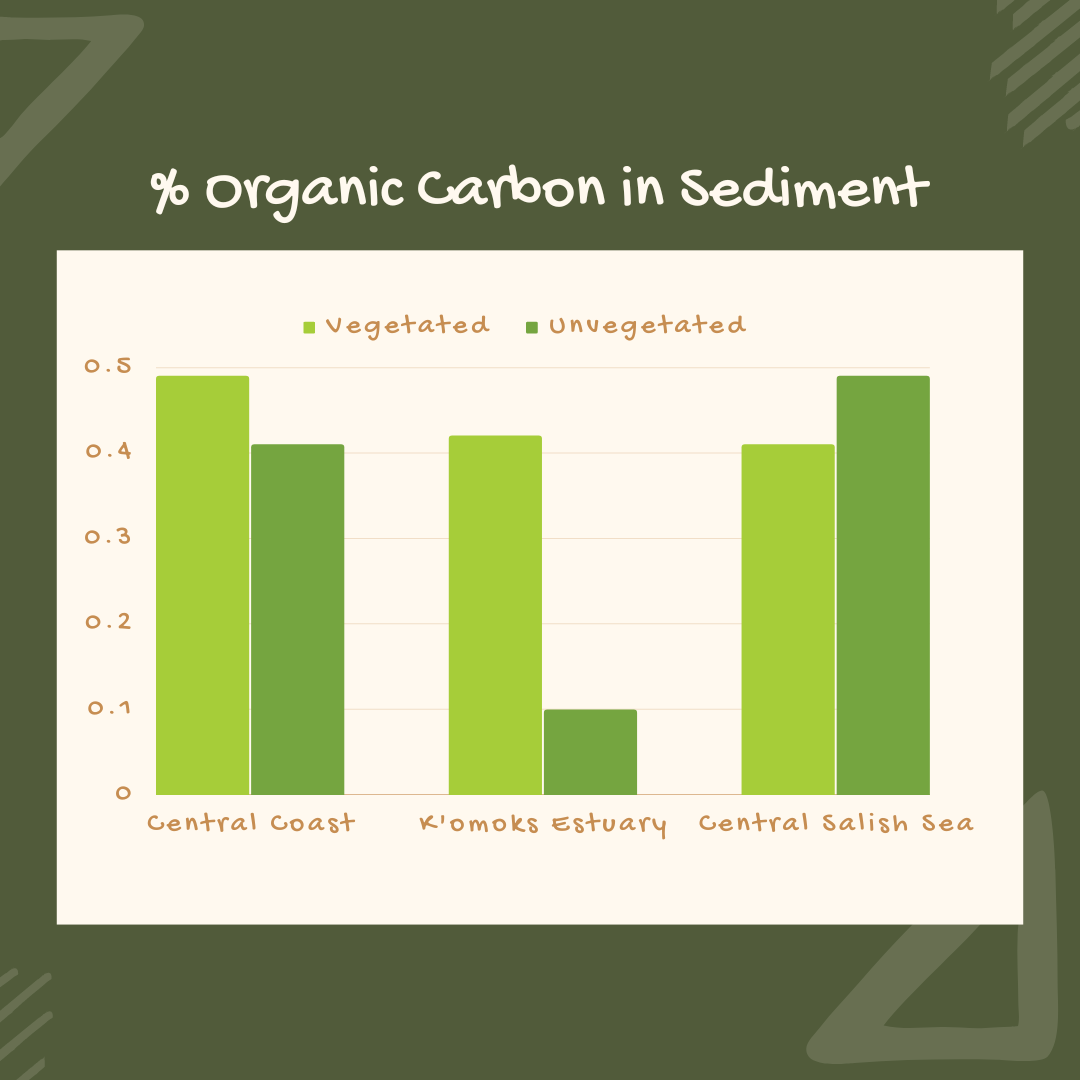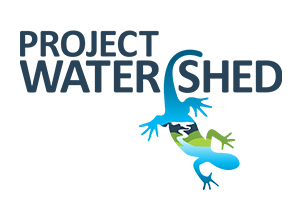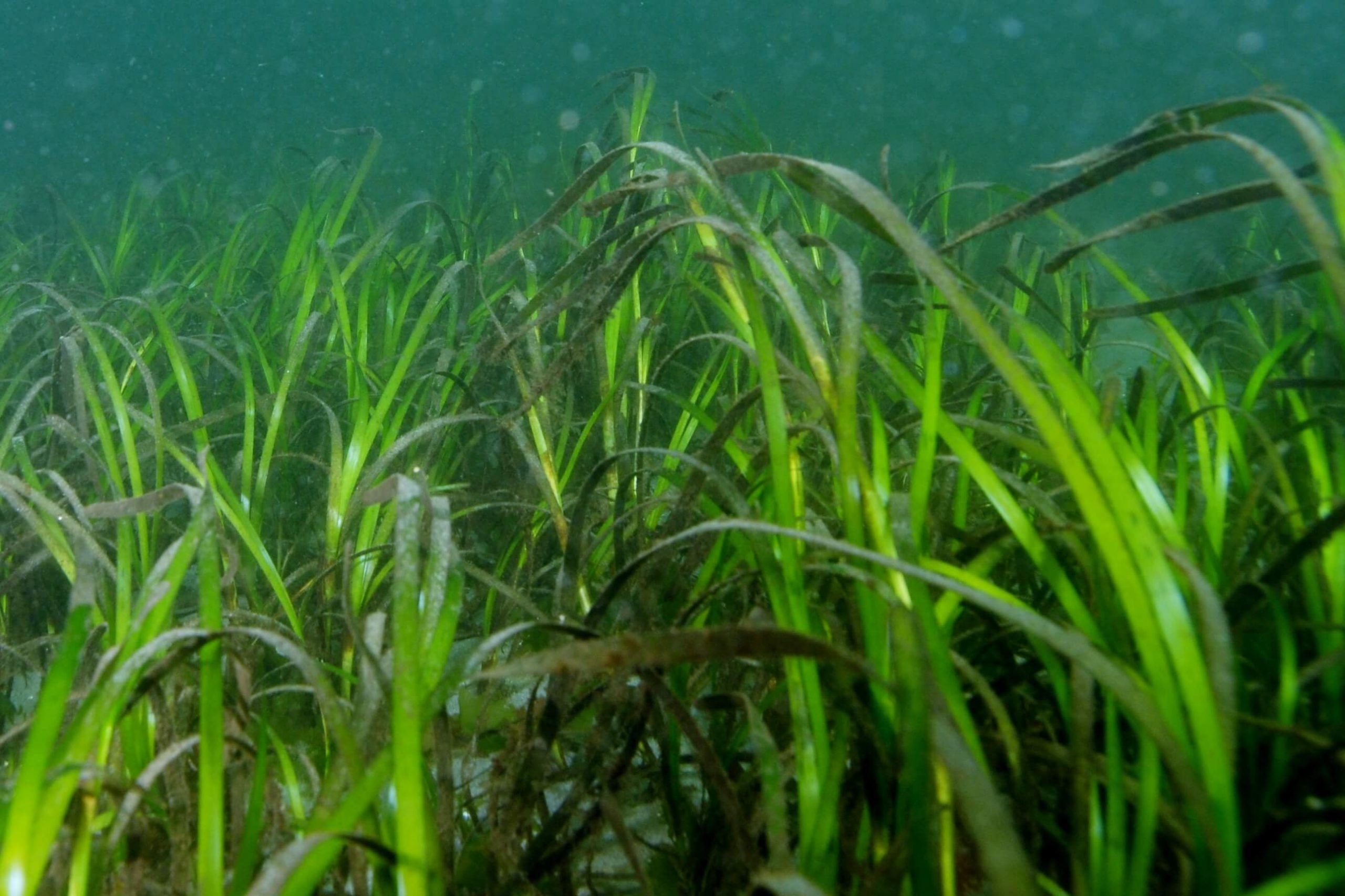Carbon Stocks, Sources, and Accumulation Rates in Eelgrass Meadows
Eelgrass ~ D. Bowen

The mean percent organic carbon in vegetated and adjacent unvegetated cores in the BC central coast, Vancouver Island, BC, and the central Salish Sea.
Created from Fig. 3 from Prentice et al., 2020
Understanding carbon dioxide (CO2) sources and sinks is crucial for combating climate change. Vegetated ecosystems, including coastal habitats like mangroves, salt marshes, and seagrass meadows, play a significant role in capturing and storing carbon, known as “blue carbon.” Unlike terrestrial systems, coastal habitats store most of their carbon below ground in sediments.
The article A Synthesis of Blue Carbon Stocks, Sources, and Accumulation Rates in Eelgrass (Zostera marina) Meadows in the Northeast Pacific contends that coastal habitats like mangroves, salt marshes, and seagrass meadows can help fight climate change by capturing carbon dioxide (CO2) and storing carbon. The authors studied seagrass meadows in Alaska, British Columbia, Washington, and Oregon and found their carbon storage capacity to be similar to other eelgrass meadows but lower than the global average. They conclude that it’s important to protect these habitats and their carbon stocks, even though they may not store as much carbon as other seagrass meadows.
In this study, data from 30 eelgrass meadows in different regions spanning from the northernmost site in Southeast Alaska (Prince of Wales Island) to the southernmost site in the South Slough National Estuarine Research Reserve, Oregon, were analyzed, including vegetated and unvegetated areas. Sediment cores were also collected and sampled from 16 meadows in the study area.
Organic carbon content in the sediment was found to be generally higher in vegetated areas compared to unvegetated sediments, except in the central Salish Sea. This difference could be attributed to several factors, including the shallow root systems, patchy and sparse nature, and the preference for coarse sandy sediments by Zostera marina (seagrass), which may limit carbon retention. Additionally, the observed similarity may be influenced by the potential presence of previously vegetated areas among the unvegetated sites. The lack of historical mapping data makes it difficult to determine the previous distribution of seagrass meadows. Furthermore, if sampling was not far from the meadow, nearby unvegetated areas could still be influenced by the carbon capturing effect of the seagrass canopy.
Recent studies (2012-2018) on temperate eelgrass meadows indicate that carbon stocks and accumulation rates are lower than global estimates for seagrass meadows (temperate =~1,3%, global =~2.5 %). This highlights the need for local carbon data, especially for carbon credits and offset schemes. Understanding habitat features at various scales is crucial for accurate blue carbon estimates. Carbon storage is just one reason to conserve and restore eelgrass meadows globally and in the Pacific Northwest.
In conclusion, seagrass restoration projects present a crucial opportunity to revive and protect these important coastal ecosystems. Project Watershed will be restoring eelgrass meadows around the Oyster River Estuary this year and we are actively searching for volunteers to help with this effort. By volunteering your time and energy, you can actively contribute to the preservation of eelgrass habitats and the diverse marine life they support.
Prentice, C., Poppe, K. L., Lutz, M., Murray, E., Stephens, T. A., Spooner, A., Hessing‐Lewis, M., Sanders‐Smith, R., Rybczyk, J. M., Apple, J., Short, F. T., Gaeckle, J., Helms, A., Mattson, C., Raymond, W. W., & Klinger, T. (2020). A synthesis of blue carbon stocks, sources, and accumulation rates in eelgrass (zostera marina) meadows in the Northeast Pacific. Global Biogeochemical Cycles, 34(2). https://doi.org/10.1029/2019gb006345
Related Posts
Fall and Winter Forage Fish Sampling
We’re gearing up for the fall/winter season of forage fish sampling!
Mallard Creek Riparian Planting
We will be planting native riparian species along a section of Mallard Creek that we recently cleared of invasive Reed canarygrass.
Fall Planting at Kus-kus-sum
We are looking for volunteers to assist us with planting native trees, shrubs, and marsh plants at Kus-kus-sum this fall!
A New Day for Forage Fish
Project Watershed and the Coastal Forage Fish Network (CFFN) are celebrating Surf Smet Day on October 25th! This adds another day on which to celebrate and raise awareness about beach spawning forage fish as Pacific sand lance are celebrated on a day in December.
Fall Work at Kus-kus-sum
We are looking for volunteers to assist us with weeding out invasive plants to make room for the native plants arriving later this fall!
Forage Fish Survey Techniques Workshop
The Coastal Forage Fish Network (CFFN) is hosting two one-day workshops to introduce development considerations and methods to survey for beach spawning forage fish for projects that may impact beach spawning forage fish.


